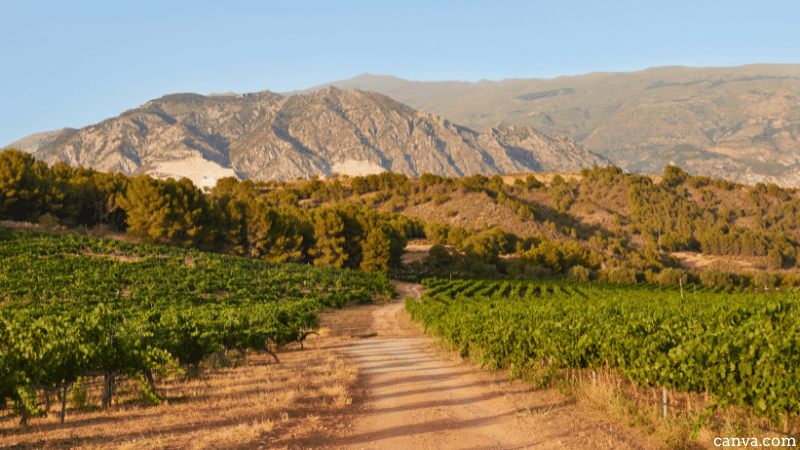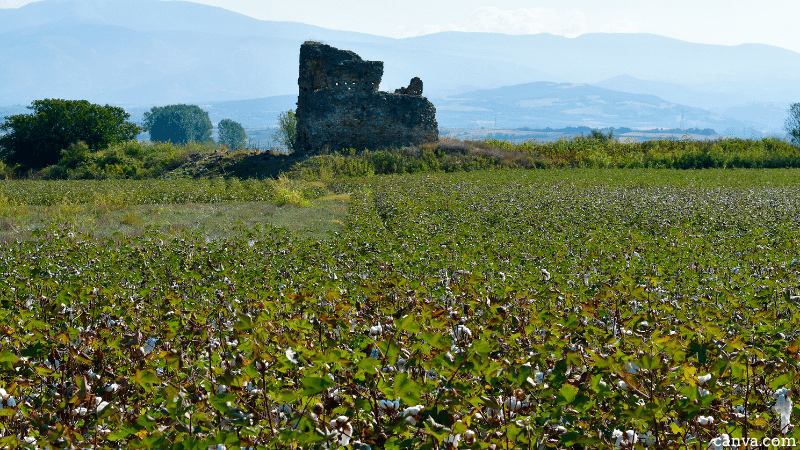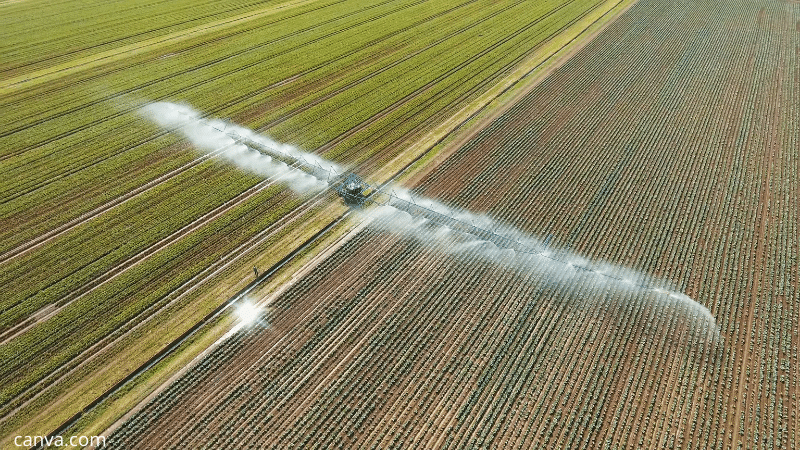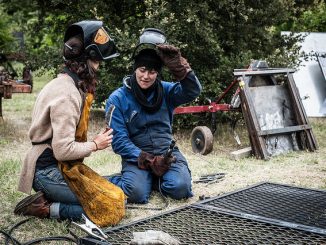By Mathieu Willard & Matteo Metta
In a context of war and spiking food prices, a series of observation letters, meetings, and negotiations between the Commission and Member States are shaping the future national CAP Strategic Plans. Are these negotiations going to make any changes that matter? Here is our analysis.
Introduction
Three months after the submission of the draft CAP Strategic Plans, the European Commission has published the 28 Observation letters on the plans and the Member States’ official reaction and comments. The approval procedure is not as crystal clear as it seems. The negotiations with the Member States were open only to some symbolic tweets instead of sharing the minutes or synthesis of conclusions. Some Member States are still to publish their comments, whereas others have made the access to observation letters uneasy for civil society, researchers, and stakeholders outside the government circles.
But, besides these formalities, what substantial outcomes can we expect from these observation letters and negotiations on pressing matters in food, rural, and agriculture? Are the negotiations going to close key gaps and reverse poor proposals made initially by the Member States, like retro-fitting eco-schemes to maintain business as usual, fairness-washing of direct payments, the concentration of sectorial support to large, commercial producer organisations, or the poor targeting of unclear result indicators?
Here an analysis of the process and substance of the approval of the plans.

From strategic to fickle approach
It is hard to believe in future commitments of the CAP post-2022 when the Commission itself does the opposite of what it says. It is committed to increase landscape features but allows the ploughing of fallow land and use of chemical inputs (fertilisers, pesticides). It is committed to seriously make the distribution of direct payments fairer, but then turns a blind eye on the backward steps or the fairness washing of the future plans. It is committed to support rural areas, but then allow Member States to transfer money from Pillar II to Pillar I without strong socio-ecological conditionalities. It is committed to adopt a strategic, evidence-based approach, and accept plans devoid of quantitative ex-ante evaluations or incorporations of SEA results to support their higher ambition.
On one hand, the Commission has been requesting many clarifications and changes in the plans in order to align them with Green Deal Objectives. On the other, it is still leaving the door open to substantial backpedalling on the green architecture and maintaining business as usual. All this is being justified by the need to adjust the CAP reform to the consequences of war in Ukraine on grain markets. We discussed how the arguments and solutions to tackle food security issues are dubious and ineffective (e.g. CAP Strategic Plans and food security, ARC’s section on war in Ukraine).
This double talk has made the context in which Member States have to answer to the observation letters very unfavourable to concrete adaptations and weakens the overall potential of the negotiation process. There are rare examples where Member States took the opportunities to improve the plans in substance. For instance, after much campaigning, Ireland announced a 17 Million Euro scheme to support farmers to farm for breeding waders (e.g. curlew, lapwing, golden plover) and their habitats on the 9th June.
This adjustment came as part of a series of biodiversity initiatives in Ireland, with the programme “designed to support and compliment the Breeding Wader EIP, part of the CAP Strategic Plan, co-funded with the Department of Agriculture, Food and the Marine”. However, this small piece of progress, and the development of co-operation projects more generally, stand out as rare good examples of progressive social or environmental initiatives supported in Ireland’s CAP strategic Plan. The rest – i.e. the low CRISS rates, ineffective capping, unambitious eco-schemes, space for nature conditionality, and a lack of robust monitoring and evaluation tools – are instead areas where Ireland could still achieve substantial improvements, as has been unpacked on ARC previously (e.g. Changes “required” to Ireland’s CAP Strategic Plan; CAP fairness and the Merits of a Unique Beneficiary Code; Slashing Space for Nature? Ireland Backsliding on CAP Basics).
Similarly, German Minister Özdemir has welcomed the Commission’s observations on a plan that was mostly elaborated by the previous minister, stating that they would take into account the remarks to reshape the CAP plan. But in the Council, German intentions have shown to be quite the opposite, with Özdemir proposing that the new GAEC on crop rotation be postponed to 2024. Indeed, on the 13th of June AGRIFISH Council’s meeting, Wojciechowski made a proposition for a derogation on GAEC7 and GAEC8 for year 2023 and that 16 Member States, including Germany, supported this proposition.

Are Observation Letters fulfilling their purpose?
Bilateral meetings have been organised between high level representatives of the Commission and Member States, as Commissioner Wojciechowski publicised on twitter, and continue to happen ongoingly with bilateral exchanges between officers at technical levels. In both cases, the Commission has shared very little information on the outcomes of these negotiations. At the same time, the Commission DG AGRI still hold a tighter, privileged connection with the agri-industry lobby of COPA-COGECA.
At Member State level, a few public meetings were organised around the observation letters. They mainly served to inform stakeholders about the letters, rather than finding collaborations and ways to address them. Most of the internal negotiations are indeed happening behind closed doors. All this secrecy is counterproductive. The letters are part of the policy reform process. A constructive discussion on their content at Member State level could open the door to concrete improvements.
So, the big question to answer is what happens if Member States do not take into account the requests or adequately answer the questions raised in the letters in their revised CAP plans. Timewise, it is clear that Article 121 of Regulation (EU) 2021/2115 establishes six months between the first submission and final approval of the plans (excluding the time used by the Commission for sending the letters and the time used by the Member States to reply and send a revised plan). However, as regards the follow up steps and procedures in case of disagreement after the six months, there continues to be little clarity at different levels. With the time running out, the worst-case scenario of business-as-usual can be expected.

Observation letters and indicators: the shaky CAP foundations
Indicators and targets are emerging as one of the critical area of the CAP plans. But are they really able to signal the level of ambition of the plans and their alignment with the Green Deal? The observation letters are point out to a poor setting and misuse of national targets related to various indicators, especially on climate and environmental objectives, and are requesting Member States to “revise the proposed target values, by improving their accuracy and taking into account all the relevant interventions, and by defining an adequate ambition level in line with the identified needs” as well as “to better demonstrate the increased ambition of the planned green architecture as regards environmental and climate related objectives using qualitative and quantitative elements such as financial allocation and indicators”.
This is all the more troubling knowing that it is those indicators that will be used to evaluate the performance of the CAP plans in achieving the CAP objectives. And the indicators, even when used correctly, can still be found to be open to interpretation or incomplete to draw a full picture on the expected merits of the CAP reform. This is the case for R.6 (Result Indicator 6) Redistribution to Smaller Farms, which (might) tell us something about the level of payments of beneficiaries below vs above the national average, but cannot say much about the overall extent to which direct payments will be concentrated between small, medium, and large owners.
Furthermore, in the overview of the observation letters (Page 7), the Commission shows a narrow legal interpretation of redistributive payments (CRISS) as to be given to ‘the first hectares’. Clearly, Article 29 of the CAP Strategic Plan regulation allows this interpretation but does not necessarily mean so. Indeed, Member States can also define eligibility criteria, so that CRISS could be designed also in different ways.
For instance, Member States could also define a max number of hectares for the farmers to be eligible for CRISS, thus excluding those above this max. This seems to be the case proposed by the Italian CAP Plan (Pag 347), where CRISS payment is given only to the farmers with a size between 0.5 and 50 hectares. Moreover, Italy will provide CRISS only to the first 14 hectares of these eligible farms (between 0.5 and 50 ha), and not the others (e.g. above or below).
The Commission can study the weak and strong approaches to shed lights on their true meaning or encourage the most effectives ones. In its overview, the Commission needs to send clear policy messages by distinguishing the qualities of CAP interventions strategies. It could, for instance, shed more lights on the ‘French’ or ‘Irish’ interpretation of CRISS, where money is redistributed to the first hectares of every farm. Even the large ones.

Asking the right questions
How could the Commission push for more positive outcomes from these negotiations – instead of sitting back and drawing EU-level conclusions about the future CAP plans based on generic check lists? The Commission should avoid falling into the trap of praising the high values of planned target result indicator and, instead, should investigate more about their quality, how Member States have set them (methodology and calculation), and what these indicators really mean in the substance. The Commission has to move away from EU wide messages based on mechanic check-lists and embrace policy assessments that take into account also steps backwards, the qualities of interventions, and the sharing of best practices at national and regional level.
Based on what we’ve shown, examples of good question to be asked would be: is it enough that 10% of pillar I budget is allocated to redistributive payments to justify not implementing capping ? Or, is it efficient that coupled income support for livestock could earn a farmer more money than implementing an extensive grazing eco-scheme? Many questions can be raised. National organisations and agricultural unions working on CAP should have the opportunity to pressure the Member States on those various issues.
Answering those questions is what should be done now, involving a whole diversity of stakeholders in the process. Instead, a lot of energy is wasted on searching for documents and information, screening unreadable CAP plans, translating them, and trying to make our points heard by governments that tend to think that small incremental changes will be enough.
What can the Commission do at this stage?
Time is running out and farmers need to have clear rules in order to prepare for next year. No second round of observation letters seems to be foreseen. Therefore, it is all the more essential that the Commission provides tools to follow the process more closely. It is also in their interest as different stakeholders in every Member States need the support to be able to pressure their government into modifying the CAP plans with increased social and environmental ambitions, as the Commission itself is requesting. The Commission has the opportunity to work with civil society in order to make their own work relevant. But more transparency and facilitation tools are needed, of which those would be essential:
- The Commission can make clarity about what and the extent to which the plans have been revised following the negotiations.
- The Commission can ask the Member States and the future CAP networks to summarise the CAP plans, their key reforms and targets. The plans are indeed very long and the format is often hard to read and comprehend. Those synthesis should be available in the Member State language and in English for organisations from other countries to be able to compare ambitions across Europe and pressure their own government.
- Those syntheses should compare key reforms to the previous legislations and baselines, in order to assess the real contribution of the CAP plans and possible backslides.
- Key requests from the observation letters that relate to those reforms could then be added to highlight pressure spots.
- The Commission can publish the outcomes of the negotiations with the Member States before the pending approval.
After the submission of the revised CAP plans, the Commission will start a three-month process of evaluating them before final approval. During this process, the Commission will have the opportunity to “stop the clock” if they need more justification or if parts of the CSP still need to be modified. It should be possible for everyone to follow-up on this process and pressure their own governments to implement the changes required.
Keeping the next steps in mind
Even though it might seem late to ask for improved transparency and follow-up from the Commission on the negotiations, it is important to keep in mind that the approval of the CAP plans is not the last step before the next CAP programming, in 2028. The 2023-2027 legislation provides many opportunities to adapt the CAP plans along the way. If the observation letters turn out to be of little real impact or use, as the ex-ante evaluations were, the Commission should then learn from this experience and consider introducing those kind of tools in order to bring to the fore and make good use of the next revision opportunities. It makes no sense to develop a thorough process for subsidiarizing the CAP, with ex-ante evaluations, SWOT analyses, Observation Letters and more, if each step is then overlooked.
Every year, annual performance reviews will have to be presented by Member States with the possibility to propose adaptations of the CAP plans. The Commission will also evaluate the efficiency of the CAP plans in reaching its objectives through biennial performance reviews. Those key milestones must be detailed by the Commission and accompanied by tools for civil society and stakeholder organisations to be able to follow them up easily and accompany the Commission in pressuring the Member States towards more social and environmental ambition. In the CAP Strategic Plan Regulations and delegated acts, Member States are already asked to make those performance reviews public and to “establish a secure electronic information system, in which they shall record and keep key information on the implementation of the CAP plans that is needed for monitoring and evaluation, in particular for monitoring progress towards the objectives and targets set”. Reports made from this information system should be made public as well in order to increase inclusivity in the CAP process and the overall relevance of the CAP steps to come.
Download this article as a PDF
 This article is produced in cooperation with the
This article is produced in cooperation with the
Heinrich Böll Stiftung European Union.
More on CAP Strategic Plans
Wallonia’s Observation Letter: A plan that fails to address climate and biodiversity crises
CAP Strategic Plans and Food Security: Fallow Lands, Feeds, and Transitioning the Livestock Industry
A Just and Green CAP and Trade Policy in and Beyond the EU – Part 2
A Just and Green CAP and Trade Policy in and Beyond the EU: Part 1
Bulgaria’s CAP Strategic Plan: Backsliding on Nature and Biodiversity
Changes “required” to Ireland’s CAP Strategic Plan – European Commission
French CAP Plan: What Opportunities for Change During the New 2022-27 Presidential Term?
CAP, Fairness and the Merits of a Unique Beneficiary Code – Matteo Metta on Ireland’s Draft Plan
ARC Launches New Report on CAP as Member States Submit Strategic Plans
Slashing Space for Nature? Ireland Backsliding on CAP basics
Quality Schemes – Who Benefits? Central America, Coffee and the EU
Civil Society Organisations Demand Open and Ambitious Approval of CAP Plans
CAP Strategic Plans: Germany Taking Steps in the Right Direction?
CAP Strategic Plans: Support to High-Nature-Value Farming in Bulgaria
Commission’s Recommendations to CAP Strategic Plans: Glitters or Gold?
German Environment Ministry Proposals For CAP Green Architecture
CAP Performance Monitoring and Evaluation Framework – EP Position
A Rural Proofed CAP post 2020? – Analysis of the European Parliament’s Position
CAP Beyond the EU: The Case of Honduran Banana Supply Chains
CAP | Parliament’s Political Groups Make Moves as Committee System Breaks Down
CAP & the Global South: National Strategic Plans – a Step Backwards?
CAP Strategic Plans on Climate, Environment – Ever Decreasing Circles
European Green Deal | Revving Up For CAP Reform, Or More Hot Air?
Climate and environmentally ambitious CAP Strategic Plans: Based on what exactly?
How Transparent and Inclusive is the Design Process of the National CAP Strategic Plans?






